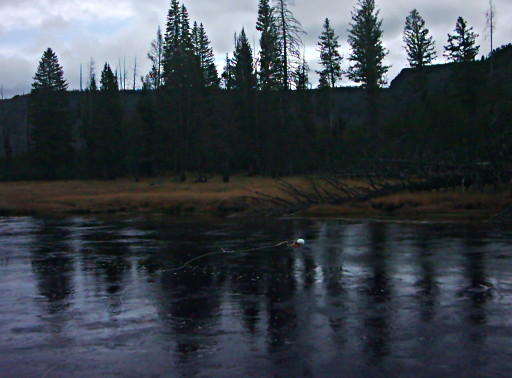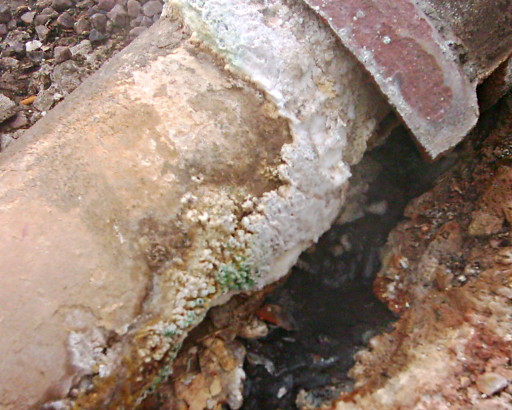I can think of a number of things to complain about with regards to living where I do. However, it is nice that we live near enough to Yellowstone to day-trip there. In fact, it’s close enough for my local college to take field-trips there – which we did.
Environmental Chemistry spent the weekend there, examining the area, discussing the chemistry of the natural waters and geothermal features, and collecting samples (yes, we had a permit for this…).
We started with a stop by the side of the Madison River to collect a sample of the surface water. Clear, cool (12°C, or about 55°F), mildly basic (pH of about 8.0), and a TDS reading of about 300ppm, which is roughly the same as mildly to moderately hard tapwater, I suppose.

The sampling device -seen being hurled over the water here – is kind of interesting – it’s a hollow tube (a bit of plastic pipe) with two spring-loaded balls that slam shut on either end to trap the water inside when you tug on the string. That lets you throw the device out and trigger it when it gets to the precise spot that you want to take a sample from.
We made a brief stop at Beryl Spring afterwards. We didn’t do any sampling here, but we did talk about acid-sulfate water systems. “Reduced” sulfur – as Hydrogen Sulfide gas – comes boiling out from underground along with steam, and ends up being oxidized by oxygen from the air to become sulfate in the end – combining with the water and forming sulfuric acid.

Of course, it doesn’t go from sulfide to sulfate all at once. There’s a stop along the way as elemental sulfur. The whitish-yellow stuff here is crystals of elemental sulfur. The black stuff you see is…also crystals of elemental sulfur. The difference is just how the atoms of sulfur collect together. The black form is actually a little less stable than the yellow, so it tends to form first, but then slowly convert to the yellow form over time as the sulfur atoms settle into a more stable arrangement. Being a chemistry class, we didn’t really discuss the possible microbial activity that might be involved here. Note the small patch of dark-green there. I suppose this could be a “Green Sulfur Bacteria“, which does something like photosynthesis except that it makes sulfur instead of oxygen in the process. These are normally anaerobic but perhaps the concentration of hydrogen sulfide (H2S) and carbon dioxide gas coming out of the ground right there is enough to crowd out the oxygen. Alternatively, it could just be a heat-loving cyanobacterium or something.
I really wish I wasn’t too poor to buy a good field microscope to go along with the good lab microscope that I am also too poor to buy…
The last two stops of the day – Appolinaris Spring and Narrow Gauge Spring – will be in the next post…